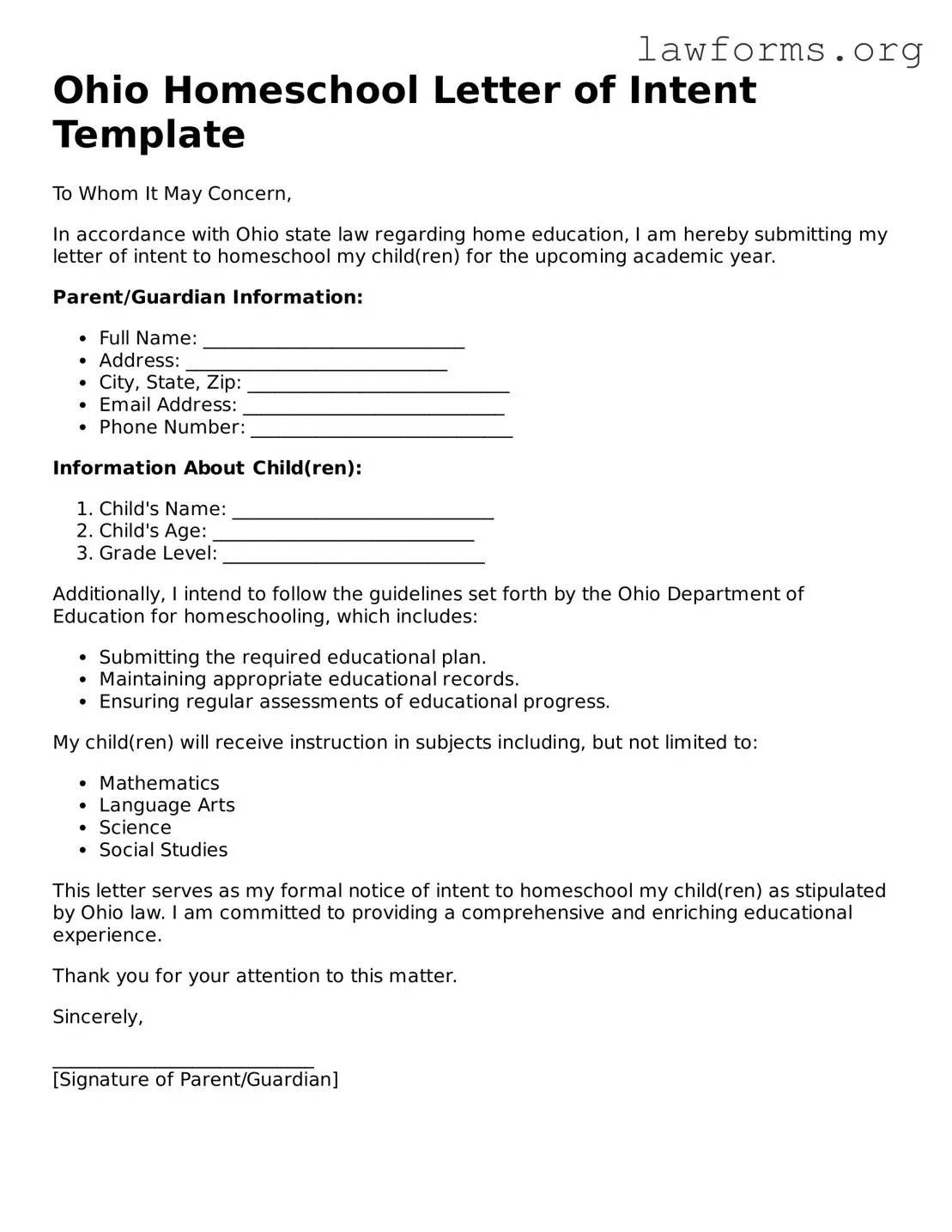Ohio Homeschool Letter of Intent Template
To Whom It May Concern,
In accordance with Ohio state law regarding home education, I am hereby submitting my letter of intent to homeschool my child(ren) for the upcoming academic year.
Parent/Guardian Information:
- Full Name: ____________________________
- Address: ____________________________
- City, State, Zip: ____________________________
- Email Address: ____________________________
- Phone Number: ____________________________
Information About Child(ren):
- Child's Name: ____________________________
- Child's Age: ____________________________
- Grade Level: ____________________________
Additionally, I intend to follow the guidelines set forth by the Ohio Department of Education for homeschooling, which includes:
- Submitting the required educational plan.
- Maintaining appropriate educational records.
- Ensuring regular assessments of educational progress.
My child(ren) will receive instruction in subjects including, but not limited to:
- Mathematics
- Language Arts
- Science
- Social Studies
This letter serves as my formal notice of intent to homeschool my child(ren) as stipulated by Ohio law. I am committed to providing a comprehensive and enriching educational experience.
Thank you for your attention to this matter.
Sincerely,
____________________________
[Signature of Parent/Guardian]
